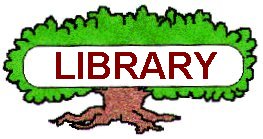

Home Page |
MICHIGAN FORESTS FOREVER TEACHERS GUIDE
| RESEARCH QUESTIONS |  |
Some teachers use open-ended questions that allow some students to explore subject areas in a more free-style manner. The following questions are suggestions. There certainly can be additional questions.
1. In Wisconsin and Michigan, counties are the largest forest public forest owners. Why does Michigan have so much state-owned forest?
2. Research and report on the history Michigan wildfire, especially the large catastrophic fires. Have there been large fires recently, say in the last 20-30 years? Why?
3. Timber is not cut at the same rate from all of Michigan's forest. Where is our timber harvest concentrated? Which ownerships? Which regions? Why? How does that compare with other Lake States and Ontario?
4. Describe areas in Michigan that have never been forested, at least not in the last several hundred years.
5. Become email pen-pals with another school somewhere else in Michigan or in an entirely different region of the country or world. Share and learn about the forest and natural history of each other's region. What are the soil types, vegetation types, and area of forest?
6. Select a forest or timber stand that you are familiar with or become familiar with. Explain what would happen if each of the following events would occur: a) wildfire, b) major wind event, c) clearcut harvest, and d) no major disturbance.
7. As a team or small group, research the following positions and be prepared to
debate each of them.
- Clearcutting is a poor timber
harvesting practice.
- Clearcutting is a proper timber
harvesting practice.
- Herbicide use should be banned
for forestry uses.
- Herbicides are necessary and safe
tools in forest management.
- Forests should be left alone.
What activities would you prohibit?
- Management and conservation of
forest resources is necessary.
8. Who are the following people and what have they done for you through
conservation.
- Katherine Esau
- Ernest Just
- Rachel Carson
- Grace Chow
- Aldo Leopold
- Giffort Pinchot
- John Muir
9. Learn about the most common soil associations in your county. Describe each of them in soil classification terms. How were they formed? What species are trees are suited for each association? What non-forest uses might be appropriate for each soil type? Where else in Michigan do these soil association occur (prepare a map)?
10. Select at least ten endangered species. Describe their habitat requirements. How might particular forestry practices affect (help and hinder) these species?
11. Track the Michigan deer population size over the last 100 years. Why has the population behaved in this way? What role might forestry and timber harvest play in deer management?
12. Which Michigan universities offer a Bachelors Degree in forestry? What sort of classes are needed to earn a forestry degree? Are there curriculum differences between the forestry schools? With whom might new forestry graduates gain employment?
13. What is a riparian zone? What values are provided by riparian zones? How might forestry practices, especially timber harvest, affect water movement?
14. What is a watershed? What are stream orders? Find out the names of watersheds to which your school belongs. Prepare a map of the smallest watershed where your school is located. How far way from the school is the nearest stream or lake?
15. Your task is reduce wood use in the United States by one-half. Describe two wood substitutes and where the raw materials for each would come from. Describe the differences in energy cost and amount of environmental pollutants of using the substitutes.
 |
This website was developed and created by Michigan State University Extension for the teachers of the State of Michigan. |
Page Name:
StudyQuest.htm